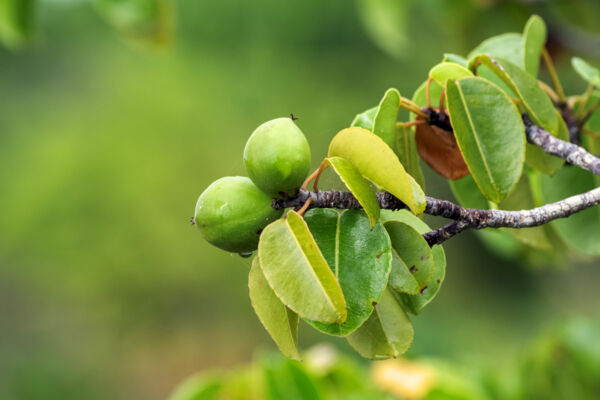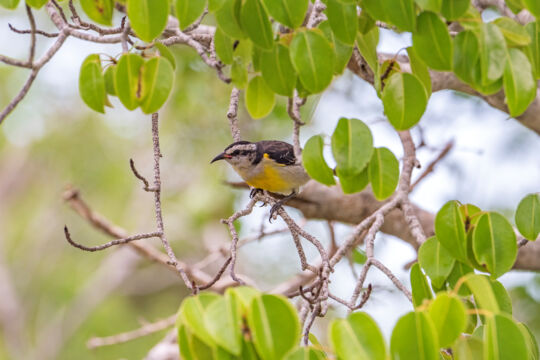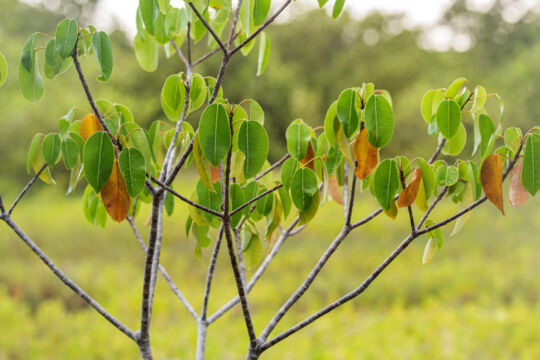Manchineel in the Turks and Caicos
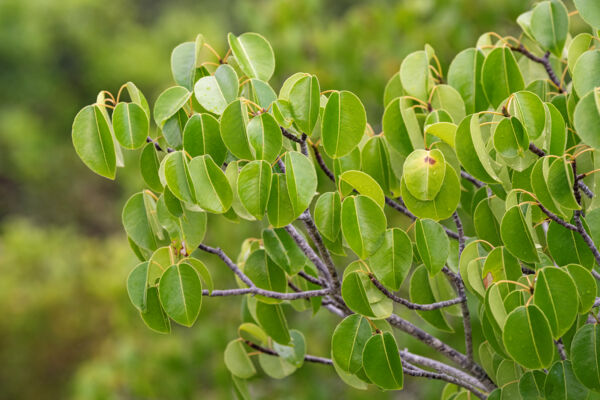
The manchineel (Hippomane mancinella) is a tree native to the Turks and Caicos. It’s somewhat common, and is the most toxic and dangerous tree found in the islands.
The milky sap from the manchineel tree can cause significant skin irritation, blisters, and rash. Ingesting this sap or the tree's small fruit can potentially cause death. As is the case with the poisonous coral sumac tree, standing under a manchineel tree while it’s raining can cause serious skin irritation.
Manchineel can be particularly dangerous to children—its open and airy structure looks ideal for climbing, and the tree has small, sweet fruits that may appear tempting to pick and eat.
| Manchineel | |
| Common names | Manchineel Beach Apple manzanilla de la muerte |
| Binomial name | Hippomane mancinella |
| Global conservation status | Least concern |
| Conservation status in TCI | Unthreatened |
| Distribution in TCI | Somewhat common |
| Maximum height in TCI | 40 feet (12 m) |
Famous explorer Ponce De Leon, who visited the Turks and Caicos in 1512, is thought to have died after being struck with an arrow poisoned with manchineel sap after a conflict with the Calusa people in Florida in 1521. A further testament to the tree’s toxicity is that the Guinness World Records considers the manchineel to be the world’s most dangerous tree.
Where It Grows
The manchineel tree can be found in most terrestrial environments in the Turks and Caicos, yet is most common on the outer edges of salinas and in coastal forests. On Providenciales, such areas include the Frenchman’s Creek Nature Reserve and the coastal dune plains near Wheeland Beach and Northwest Point. The tree is more common on some of the Caicos Islands, such as East Caicos and Middle Caicos, than it is on the Turks Islands, such as Grand Turk and Salt Cay.
Treatment After Exposure
If you have ingested any part of the manchineel tree, seek professional medical attention immediately. There are several private clinics on Providenciales, as well as the Cheshire Hall Medical Centre, that treat emergencies.
The tree doesn’t appear to affect everyone equally. As is also the case with coral sumac, washing skin that has been exposed to manchineel with soap or detergents may prevent or reduce the effects on the body. In the case of a severe reaction, seek medical assistance. Your doctor can recommend a treatment available for purchase at one of the local pharmacies.
'The Little Apple of Death'
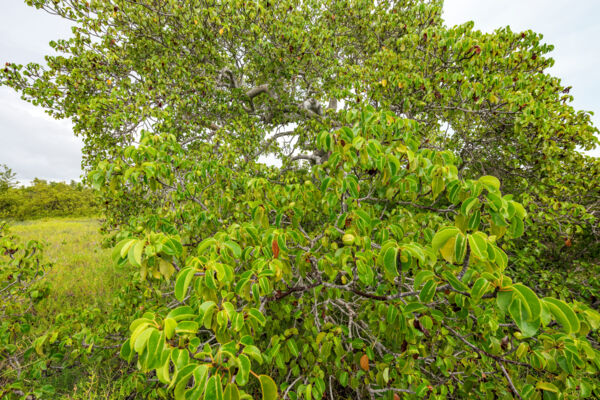
There are anecdotes that the fruit from the manchineel was used by the Aztecs to kill Spanish horses during the initial Spanish conquests of the Americas. The binomial name of the tree seems to give some credence to this, as a literal translation of the name Hippomane mancinella is 'horse madness little apple'.
East Caicos has perhaps the highest concentration of manchineels of any island in the Turks and Caicos, and also has feral donkeys. There are brackish pond sites which are surrounded by manchineel trees and have a few donkey skeletons present, yet if the trees were both highly irresistible and highly toxic to the Equus genus, there likely wouldn’t be donkeys roaming around the island.
Some birds and land crabs do appear to be able to eat the manchineel fruit without suffering the same consequences as humans.
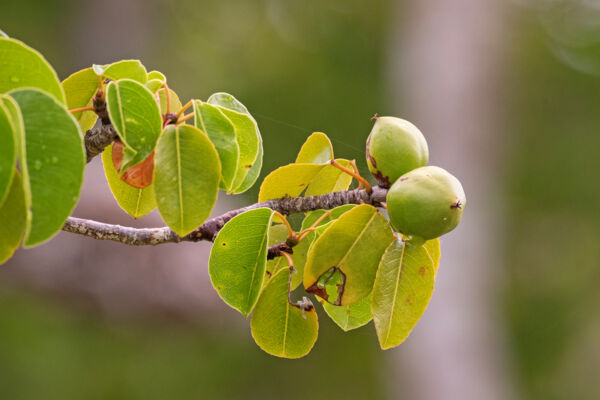
Identifying Manchineel
Manchineel typically has consistent foliage, and is often quite picturesque. Leaves are usually 2–4 inches (50–100 mm) long. Manchineels in the Turks and Caicos typically don't grow very tall. It’s uncommon to see manchineel trees that exceed 20 feet (6 m) in height, though a rare few that are more than double that height do exist in the islands.
The manchineel's fruit is typically green or greenish-yellow in color. Each fruit is 1–2 inches (25–50 mm) long, and spherical or lemon-shaped.

